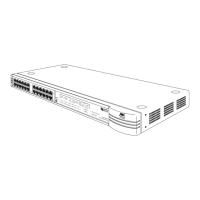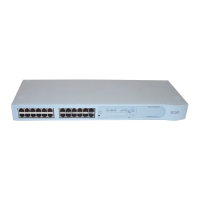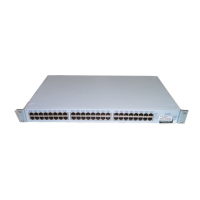Software Features Explained 25
■
No other address can be learned until security is disabled or the
address is manually removed from the database.
■
The address cannot be learned on another port until security is
disabled or the address is manually removed from the database.
For more information about enabling security on a port, see
“Configuring
a Port”
on
page 59
.
Resilient Links
The resilient link feature of the Switch enables you to protect critical links
and prevent network downtime should those links fail. Setting up
resilience ensures that if a main communication link fails, a standby
duplicate link immediately and automatically takes over the task of the
main link. Each main and standby link pair is referred to as a resilient link
pair.
Resilient links are a simple method of creating redundancy that provides
you with an instant reaction to link failure. Resilient links are quick to set
up, you have full control over their configuration, and the port at the
other end of the resilient link does not have to support any resilience
feature.
For more information about resilient links, see
“Setting Up Resilient
Links”
on
page 79
.
Port Trunks
Your Switch supports port trunks — connections that allow devices to
communicate using up to four links in parallel. Port trunks provide two
benefits:
■
They can potentially double, triple or quadruple the bandwidth of a
connection.
■
They can provide redundancy — if one link is broken, the other links
share the traffic for that link.
For more information about port trunks, see
“Port Trunks”
on
page 157
.
